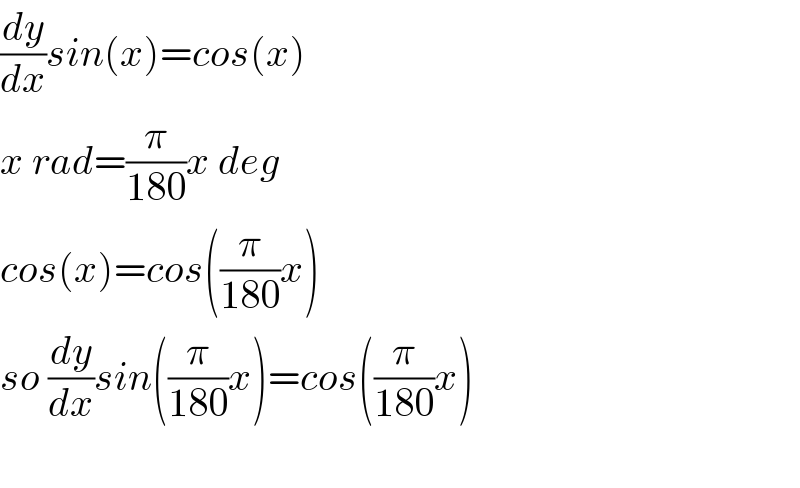
Question and Answers Forum
Question Number 90881 by M±th+et+s last updated on 26/Apr/20
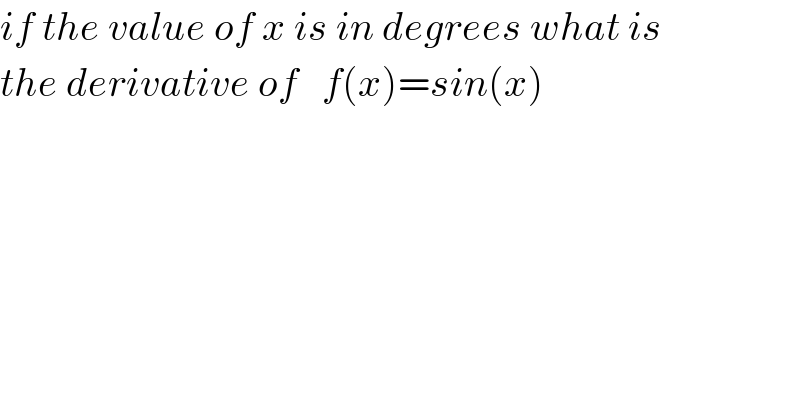
Commented by mr W last updated on 28/Apr/20
![we have different understanding: if x is in rad, the slope (dy/dx) is in unit [1/rad]. but if x is in degree, the slope is in unit [1/degree]. both slopes must not equal in value, but equal in the physical sense. when we describe the motion of a car with y=f(t)=sin(t) where t is in second, the slope (dy/dt) which is the speed in unit [m/s]. but if t is in mile, the slope (dy/dt) is also the speed, just in an other unit [m/mile]. both are of different values, but mean the same physical sense. t in f(t) can be in second or mile, x in sin(x) can be in rad or degree, which doen′t affect how we calculate (dy/dt) or (dy/dx). this is my understanding, maybe correct or maybe not.](Q91165.png)
Commented by mr W last updated on 26/Apr/20

Commented by M±th+et+s last updated on 26/Apr/20

Commented by MJS last updated on 26/Apr/20
![Sir, this obviuosly is wrong the derivate is the slope of the tangent (d/dx)[sin x^(rad) ]=cos x^(rad) but the slope of sin x° is not as steep (d/dx)[sin x°]=(π/(180))sin x° generally if f(x°) is any trigonometric function (d/dx)[f(x°)]=(π/(180))f′(x°)](Q90913.png)
Commented by mr W last updated on 26/Apr/20
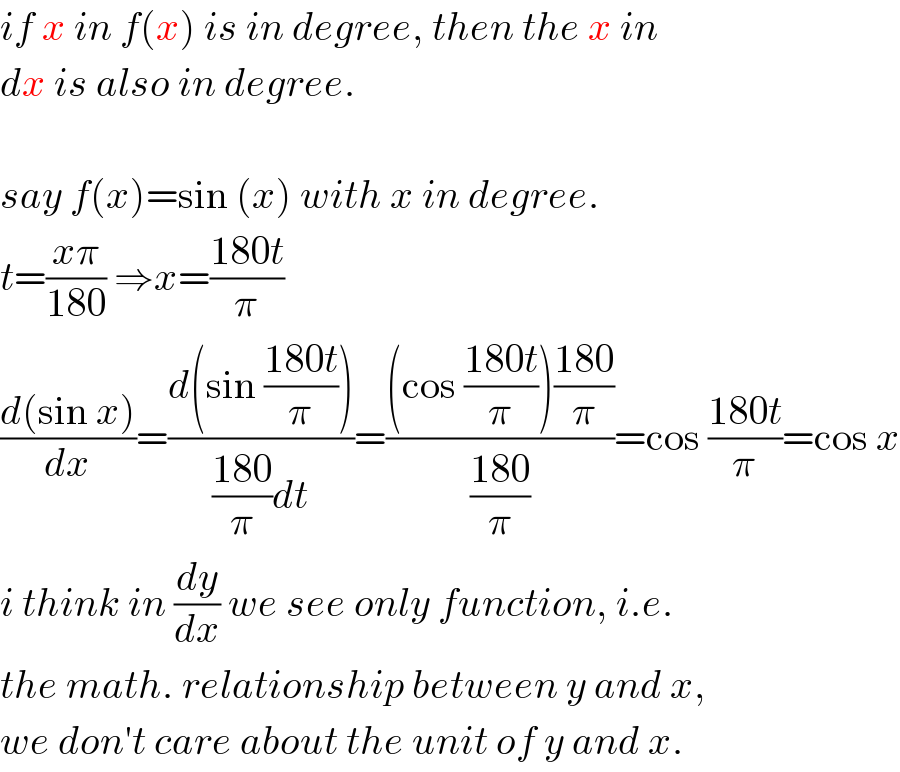
Commented by MJS last updated on 26/Apr/20
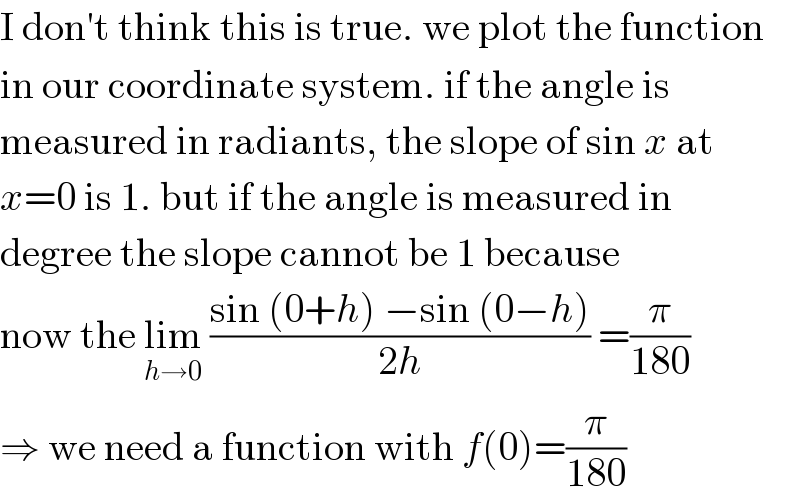
Answered by TANMAY PANACEA. last updated on 26/Apr/20

Commented by M±th+et+s last updated on 26/Apr/20
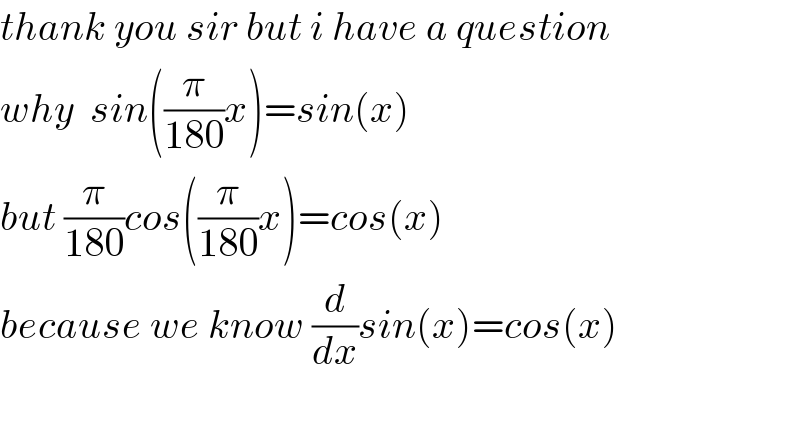
Answered by M±th+et+s last updated on 27/Apr/20
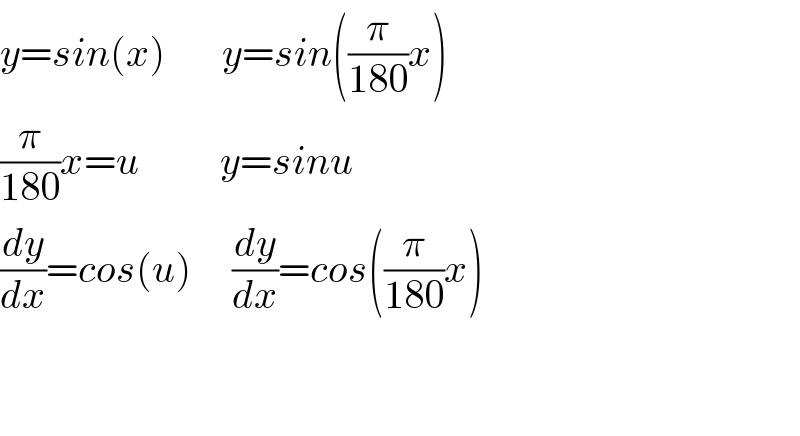
Commented by M±th+et+s last updated on 27/Apr/20
